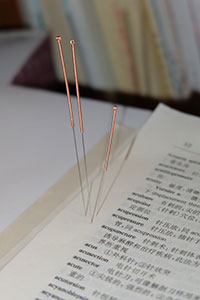Characteristics and Specialties

-
With longest practice history;
-
Treatment covers the broadest range of conditions;
-
Ideal for chronic disorders;
-
Ideal for internal organ symptoms;
-
Ideal for complex symptoms.
Classical acupuncture also known as Five Element acupuncture is an ancient form of acupuncture that works by treating a person at the levels of body, mind and spirit. The is one of the fundamentals of Traditional Chinese Medicine. In clinic practice the theory is used to varying degrees depending on the style of acupuncture a given practitioner utilizes and through out the entire treatment plan. This harmony is achieved by looking at the person as a whole being as well as understanding their symptoms. A Five Element practitioner places great importance on having a thorough understanding of the person, their environment, their health history and the Five Elements working in their life.
The Five Elements are: Fire, Earth, Metal, Water and Wood. Each of these helps create who we are and how we function in the world. Have a look through the Five Elements and see which one corresponds closest with who you are. When acupuncture is used to treat only immediate symptoms it is called formula acupuncture. This type of acupuncture can give ready relief for a time but it may not be treating the cause of the person's discomfort. A Five Element acupuncturist is carefully trained in understanding natural laws and using these to diagnose, can assist the body, mind and spirit to move back into full health. The practitioner will look for disharmony in the energy of the body through various ways. They will look for blocks between the acupuncture meridians flow like rivers around the body. They will look for which of the Five Elements is weakest and how that affects the person as a whole. They will look for how they can support the person's spirit through choice of acupuncture points and help them move back into a better relationship with themselves and the environments around them.
TCM believes that the human body is a microcosm of the Universal macrocosm. Therefore, human beings must follow the laws of the universe to achieve harmony and total health. The Yin/Yang and Five-Element theories are actually observations and descriptions of Universal law, not concepts created by man. In ancient times, practitioners of TCM discovered these complex sets of interrelationships that exist on deep energetic levels below the material surface. Over time, these insights developed into a unified body of wisdom and knowledge - TCM theories - and were applied to a way of life and to healing the human body. Even today TCM practitioners use these essential theories to understand, diagnose and treat health problems.
The Five-Element Theory is the bedrock of TCM. It evolved as a way of naming and systematizing patterns of perceived related phenomena, ranging from something as tangible as the weather to more rarified realms such as emotion and capacities of character, into five major groups named for the universal elements: Wood, Fire, Earth, Metal and Water. The Five-Element Theory states that the five major Organ Systems (Liver/Gallbladder, Heart/Small Intestine, Spleen/Stomach, Lung/Large Intestine, and Kidney/Urinary Bladder) are each related to a particular element and therefore to a broad category of correspondences or classifications: from a season of the year to a time of day, to particular colors and foods, etc. Both the Yin/Yang Theory and the Five-Element Theory reflect the entire Universal law in one complete, comprehensive system of related categories.
TCM does not consider the Five Elements themselves to be inert substances. They are fundamental energies alive in nature and always in motion. The Five-Element Theory encompasses two dynamic relationships - generation and control - that explain how the five major Organ Systems are interconnected. Each element generates, or gives energy to, another. These element pairs are known as mother and child. Each element also restrains or controls another. The proper amount of control keeps all the elements in proportion. With control, one Organ System acts as a feedback loop for its opposite pair as well as its partner Organ to keep them functioning smoothly: neither excessively nor deficiently, neither too strongly nor too weakly. These dynamic interactions enable all the Organ Systems to work in one harmonious, greater system. If their relationships are good, a state of wellness prevails; if any of the relationships become unbalanced, health problems result.
The Five-Element Theory gives a skilled TCM practitioner a range of options for addressing health problems. For instance, when a patient presents with skin problems, the TCM practitioner understands that the Organ System of the Lung and Large Intestine are involved because the skin is the "tissue" of the Lung, according to the Five Elements. Therefore, he or she can decide to heal one or both Organs to treat the root cause, not just the symptom of the skin problem.

